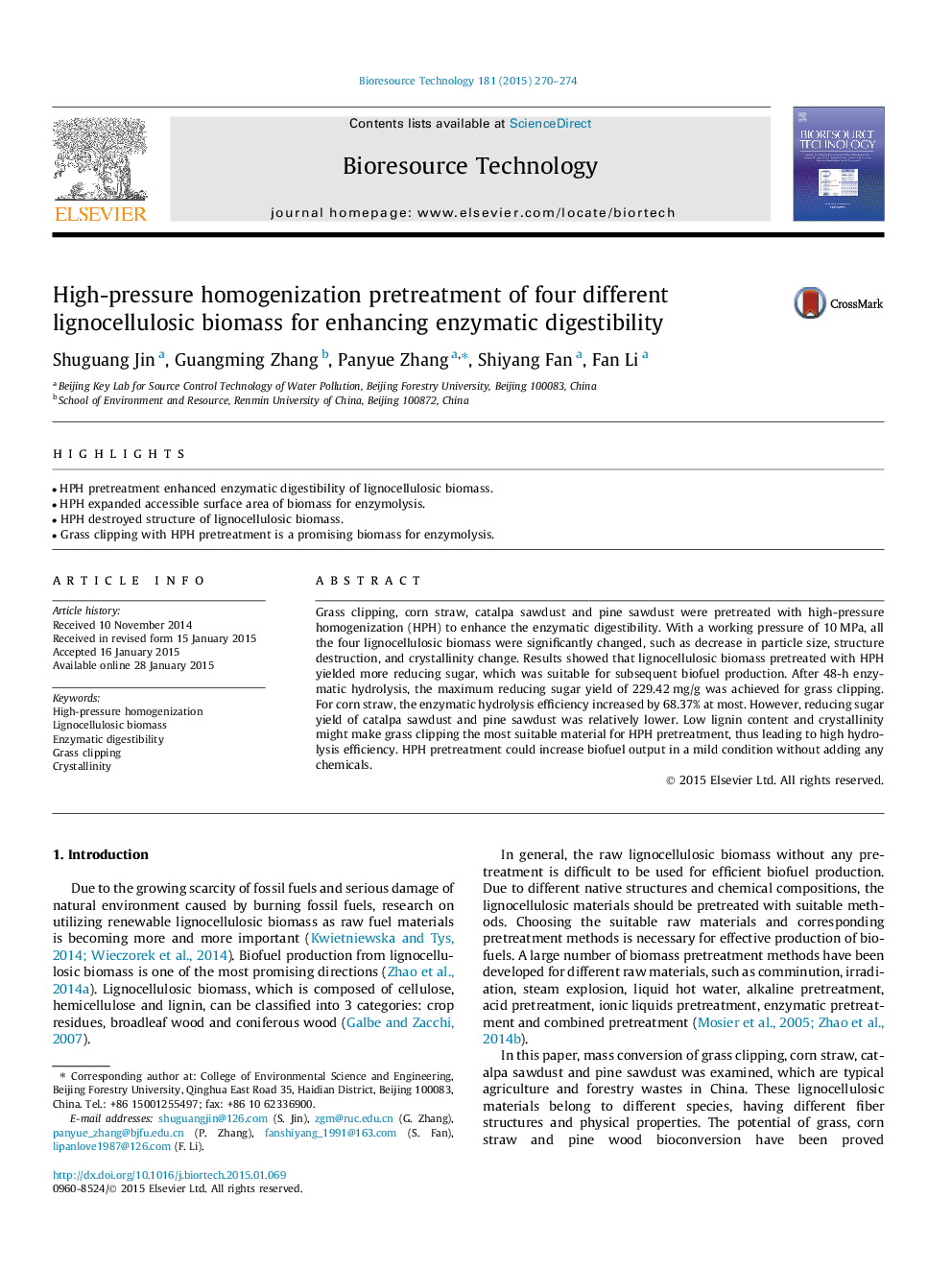| Article ID | Journal | Published Year | Pages | File Type |
|---|---|---|---|---|
| 680109 | Bioresource Technology | 2015 | 5 Pages |
•HPH pretreatment enhanced enzymatic digestibility of lignocellulosic biomass.•HPH expanded accessible surface area of biomass for enzymolysis.•HPH destroyed structure of lignocellulosic biomass.•Grass clipping with HPH pretreatment is a promising biomass for enzymolysis.
Grass clipping, corn straw, catalpa sawdust and pine sawdust were pretreated with high-pressure homogenization (HPH) to enhance the enzymatic digestibility. With a working pressure of 10 MPa, all the four lignocellulosic biomass were significantly changed, such as decrease in particle size, structure destruction, and crystallinity change. Results showed that lignocellulosic biomass pretreated with HPH yielded more reducing sugar, which was suitable for subsequent biofuel production. After 48-h enzymatic hydrolysis, the maximum reducing sugar yield of 229.42 mg/g was achieved for grass clipping. For corn straw, the enzymatic hydrolysis efficiency increased by 68.37% at most. However, reducing sugar yield of catalpa sawdust and pine sawdust was relatively lower. Low lignin content and crystallinity might make grass clipping the most suitable material for HPH pretreatment, thus leading to high hydrolysis efficiency. HPH pretreatment could increase biofuel output in a mild condition without adding any chemicals.
